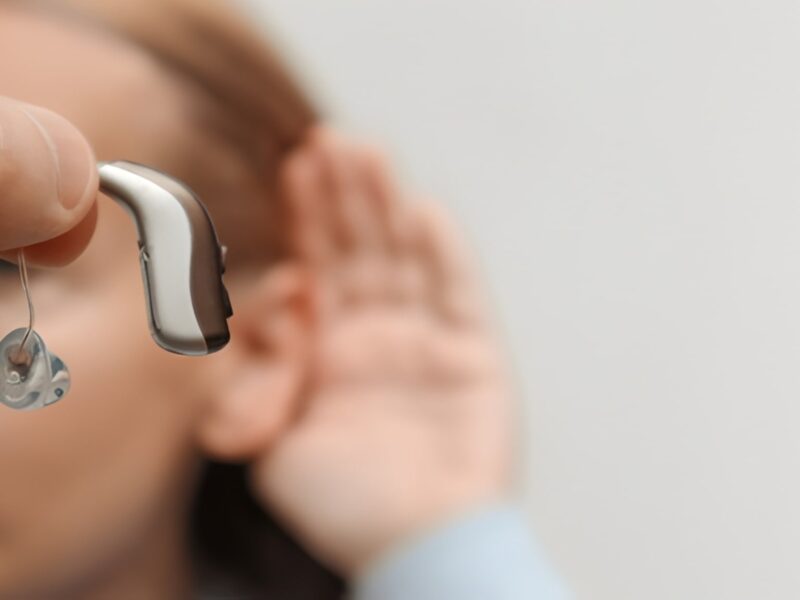Living with hearing loss is really difficult. But what if you have the right hearing aids that make all the difference. Among the many styles available, In-the-Ear (ITE) hearing aids are one of the most popular choices. In-the-Ear (ITE) hearing aids offer comfort, natural sound, and modern features like Bluetooth. On the other hand they require regular cleaning and care.
In this guide we will share real user experience and troubleshooting guide for ITE hearing aids to help you get the best from your device.
User Experience with ITE Hearing Aids
Here is more detailed information about user experience about ITE Hearing aids. As different users, experience different kinds of troubles or good things. So let’s know more deeply:
Comfort and Everyday Use
Most people who wear ITE hearing aids say that comfort is one of the biggest advantages. Because each device is custom-moulded to fit the shape of your ear. They usually sit snugly and securely. Once you adjust to the feeling, they can be worn for long hours without discomfort.
“The first week felt a little strange, but now I forget I’m even wearing them.”
Compared to behind-the-ear models, ITE aids don’t interfere with glasses, hats, or masks. This makes them especially popular with people who have active lifestyles or wear eyewear every day.
Sound Quality and Clarity
Another common piece of feedback is about sound quality. Since ITE aids sit closer to the eardrum, they can deliver a more natural and direct listening experience.
Many users say conversations feel clearer, especially in quiet settings or when speaking one-on-one. People often notice a huge difference when dining with family or chatting with friends.
“I finally joined a group conversation without constantly asking people to repeat themselves.”
That said, some users mention that their own voice sounds too loud or echoey at first. This is called the occlusion effect. Most people get used to it over time, or their audiologist makes small programming changes to reduce the problem.
Modern Connectivity Features
Today’s ITE hearing aids aren’t just amplifiers, they’re smart devices. With built-in Bluetooth technology, they connect directly to your phone, tablet, or even your TV.
This means you can:
- Take phone calls hands-free
- Listen to music or podcasts directly through your hearing aids
- Stream videos with crystal-clear sound
- Control volume and sound modes using a smartphone app
“It’s like having wireless earbuds that also help me hear. I stream music on walks and take calls in the car without anyone noticing.”
For tech-savvy users, this integration is life-changing. For those less comfortable with technology, the apps are usually simple and easy to use with just a few taps.
Common Challenges Users Report
While satisfaction is generally high, ITE hearing aids aren’t perfect. Here are some challenges users often mention:
- Earwax build-up: Since the device sits deeper in the ear canal, wax can clog the receiver or microphone.
- Battery life: Smaller devices mean smaller batteries. Streaming music or calls all day can drain power faster.
- Feedback (whistling sounds): If the fit isn’t perfect, air leaks cause feedback when talking, chewing, or hugging.
- Moisture issues: Sweat, humidity, or rainy weather can affect performance if not stored and dried properly.
“I clean mine almost every night because earwax blocks the sound if I don’t. It’s just part of the routine now.”
Overall User Satisfaction
Despite the small drawbacks, the majority of ITE hearing aid users report higher confidence, better communication, and more independence.
“I was embarrassed to admit I needed hearing aids, but now I wish I had gotten them sooner. No one even notices them, and I feel like I have my life back.”
In short, comfort, sound quality, and connectivity are the highlights. While maintenance and battery life are the main challenges.
Troubleshooting Guide for ITE Hearing Aids
Even with proper use, hearing aids sometimes stop working as expected. Here are the most common issues and simple fixes.
1. No Sound or Weak Sound
When there is issue in sound mean you are facing no sound or weak sound there could be possible reasons:
Possible causes:
- Dead or low battery
- Wax blocking the receiver
- Device not switched on
What to do:
- Replace or recharge the battery
- Check that the device is turned on
- Clean wax guards and microphone openings
2. Distorted or Muffled Sound
Sometimes users experience things like distorted sounds or muffled sounds when wearing ITE hearing aids. So look for these possible causes and solutions.
Possible causes:
- Wax or debris blocking sound paths
- Moisture inside the device
- Programming issue
What to do:
- Gently clean the hearing aid with a dry cloth
- Use a drying kit overnight
- Visit your audiologist if the problem continues
3. Whistling or Feedback
If you are facing whistling or feedback then look for these possible causes and their solutions.
Possible causes:
- Loose fit or poor insertion
- Volume too high
- Wax build-up
What to do:
- Reinsert the device properly
- Lower the volume slightly
- Have your audiologist check for fit or reprogramming needs
4. Bluetooth or Connectivity Problems
Many ITE Users face Bluetooth or connectivity problems:
Possible causes:
- Device not paired correctly
- Outdated firmware
- Phone or tablet too far away
What to do:
- Remove and re-pair the hearing aids with your phone
- Update the app and device firmware
- Keep your phone within range (usually 5–10 meters)
5. Short Battery Life
Short battery life is the problem that most of the ITE hearing aids face but feels it challenging to figure out the actual problem or solution. So here are some reasons and their solutions.
Possible causes:
- Small battery size
- Heavy streaming
- Moisture exposure
What to do:
- Use new, high-quality batteries or a rechargeable model
- Reduce unnecessary streaming if possible
- Store in a drying case overnight to prevent moisture damage
Best Practices for Maintenance
Taking care of ITE hearing aids ensures they last longer and perform better. Here are some simple habits to follow:
- Clean daily: Use a soft, dry cloth to wipe away dirt and earwax.
- Change filters: Replace wax guards regularly to keep sound clear.
- Store properly: Keep devices in a dry, cool place. A hearing aid dryer is ideal.
- Avoid water: Remove them before showering, swimming, or entering humid environments.
- Check batteries: Always carry spare batteries or keep your charging case handy.
- Schedule check-ups: Regular audiologist visits ensure programming stays up to date.
Final Thoughts
In-the-Ear hearing aids are more than just medical devices. They’re life-improving tools. Users consistently highlight the comfort, sound clarity, and smart features that help them reconnect with loved ones and daily life.
While small issues like wax build-up or short battery life are common, most problems are easy to troubleshoot at home. With regular care and the support of an audiologist, ITE hearing aids can deliver years of reliable performance.
If you’re considering ITE hearing aids, real-world feedback shows they offer a powerful mix of discretion, technology, and comfort. That makes them a strong choice for many people with hearing loss. So if you want to know more with expert advice book a consultation with Hearing Aids Matters.
FAQs
- How long will my ITE hearing aids last?
Most modern ITE devices have a lifespan of 5 to 9 years, depending on usage and care.
- Is there an “adjustment period” when first using ITE aids?
Yes! Most new users go through an adaptation phase. Experts suggest gradually increasing wear time over days or weeks. At first, everything sounds “new” and your brain needs to relearn normal ambient sounds.
- Can ITE hearing aids worsen or help my tinnitus (ringing in ears)?
Many users find that properly adjusted hearing aids actually reduce the perception of tinnitus, because the added ambient sound “masks” or distracts from the ringing. Some modern devices also include built-in tinnitus masking settings (white noise, quiet tones, etc.)
- Are ITE hearing aids suitable for all ages?
ITE aids are most commonly used in adults, for a few reasons:
- The ear mould may need replacement over time, which is easier in adults whose ears stop growing.
- In children, ear growth is ongoing, so smaller devices or behind-the-ear styles may be more appropriate.
- Also, very small or narrow ear canals may make it difficult to house all needed components.
So while not impossible, it’s less common in children or those with small ear anatomy.
- Are all ITE hearing aids rechargeable or Bluetooth-capable?
Not all, but many newer models are. The trend is toward rechargeability and advanced connectivity (streaming, apps, etc.).
- Will my hearing aid work in very noisy places (restaurants, crowds)?
ITE hearing aids improve speech understanding in many settings, but noise remains challenging. Some users report good performance, especially in quieter areas.
Advanced models use noise-reducing algorithms, directional microphones, and adaptive processing to help. However, in extremely loud or reverberant spaces, performance may still drop.
- What about “occlusion” as my own voice sounds funny; is that normal?
Yes! This is a known phenomenon called the occlusion effect, which happens when the ear canal is partially blocked, causing internal sounds (your voice, chewing, footsteps) to be amplified or echoey. Good venting, careful mould design, and advanced algorithms help reduce this. Many users say it fades over time as their brain adapts.
- Can my audiologist measure the real performance of the hearing aid inside my ear?
Yes, they can use a technique called Real-Ear Measurement (REM) or probe-microphone measurement, which places a tiny microphone in your ear canal while the hearing aid is operating. This checks whether the aid is giving the right amplification at different frequencies
Image Credit: Shutter Stock



